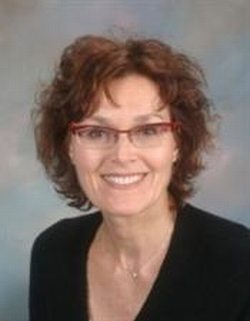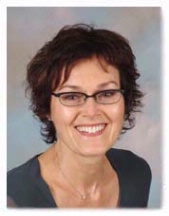URMC Biochemistry Professor Elected to National Academy of Sciences
URMC Biochemistry Professor Elected to National Academy of Sciences
Lynne E. Maquat Receives Top Scientific Honor
University of Rochester Medical Center Professor Lynne E. Maquat, Ph.D. has been elected a member of the National Academy of Sciences – one of the highest honors possible for any scientist – for her exceptional work in the field of RNA biology. Maquat will be inducted next April with 71 other newly elected members during the academy’s 149th annual meeting in Washington, D.C.

Maquat, the J. Lowell Orbison Chair and Professor of Biochemistry and Biophysics and director of the University of Rochester Center for RNA Biology, is known around the world for her research on nonsense-mediated mRNA decay, a cellular mechanism that derails the production of unwanted proteins in the body that can disrupt normal processes and initiate disease. This mechanism removes flawed RNA molecules that, if left intact, would lead to the creation of such proteins.
Maquat has made many major discoveries in this field and is considered the uncontested pioneer on the subject. Her work has been widely published in journals such as Cell and Nature.
“Dr. Maquat is an outstanding researcher who sets very high standards for her science, regularly publishing in the most prestigious journals, training highly successful research fellows and speaking across the country and around the world about her work,” said Bradford C. Berk, M.D., Ph.D., CEO of the University of Rochester Medical Center. “She is one of the premier RNA scientists in the world and we’re extremely proud that she is a part of our institution and has been recognized with this tremendous honor.”
Upon her induction in April 2012, Maquat will be at least the fourteenth University faculty member elected to the National Academy of Sciences, and the fourth from the Medical Center. In addition to Maquat, academy members from the University of Rochester include Fred Sherman, also a faculty member in the Department of Biochemistry and Biophysics, Richard Eisenberg, Porter Anderson, Elissa Newport, Esther Conwell, John Huizenga, Richard Fenno Jr., Ronald W. Jones, Rene Millon, Leonard Mandel, Lionel McKenzie, Marshall Gates and Wallace Fenn.
“Election to the National Academy of Sciences is something every scientist aspires to, but few achieve. Dr. Maquat is very well deserving of this outstanding achievement and joins an elite group of individuals from Rochester who have also accomplished great things in their respective areas of science,” said Mark B. Taubman, M.D., dean of the School of Medicine & Dentistry.
“Research science is a very exciting and, at the same time, very humbling undertaking. Discovering new cellular pathways and clues to the molecular basis of human disease is absolutely wonderful, but there is so much to know and to learn along the way and the process is very labor-intensive,” noted Maquat. “Over the course of my career I’ve worked hard, read widely and followed my instincts. I asked questions I thought were important, obtained data using more than one experimental approach, and probed a few questions deeply rather than many questions superficially in any one project.”
According to Maquat, “My accomplishments would not have been possible without years and years of wonderfully committed and talented graduate students and post-docs in my laboratory.”
Maquat joined the University of Rochester Medical Center in 2000, after spending 18 years at the Roswell Park Cancer Institute. In addition to serving as director of the Center for RNA Biology, Maquat also created and leads the University of Rochester Graduate Women in Science program, one of several programs she initiated as principal investigator of a National Institutes of Health graduate student training grant in cellular, biochemical and molecular sciences.
Maquat has been a member of the RNA Society since its formation in 1993, and was honored with the society’s Lifetime Achievement Award in Service last year. She was also elected to the American Academy of Arts and Sciences and the American Association for the Advancement of Science in 2006.
“Dr. Maquat is an extremely active and productive researcher, and with the enthusiastic and steadfast support of the Medical Center generates some of the finest high quality science,” said Robert Bambara, Ph.D., chair of the Department of Biochemistry and Biophysics. “As a world-class academic institution, it is important that we continue to excel not only in clinical research, but in basic research as well. Dr. Maquat exemplifies our strength in the fundamental sciences and the great impact such research can have.”
The National Academy of Sciences is a private organization of scientists and engineers dedicated to the promotion of science and its use for the general welfare. It was established in 1863 by a congressional act of incorporation that calls on the academy to be an official advisor to the federal government, upon request, in any matter of science or technology. For the full list of newly elected members, visit http://www.nasonline.org/site/PageServer?pagename=News_May_3_2011_member_election
Lynne Elizabeth Maquat, Ph.D. Bio.
University of Rochester
School of Medicine and Dentistry
601 Elmwood Ave., Box 712
Rochester, NY 14642
Office: (585) 273-5640
Fax: (585) 271-2683

> Research Bio
Research in my lab focuses on RNA decay pathways. One pathway, called nonsense-mediated mRNA decay (NMD) or mRNA surveillance, surveys all newly synthesized mRNAs during what we call a “pioneer” round of translation. This round of translation involves mRNA that is associated with the cap binding heterodimer CBP80 and CBP20. It is distinct from the type of translation that supports the bulk of cellular protein synthesis and involves a different cap binding protein, eukaryotic initiation factor (eIF) 4E. Generally, if translation terminates more than 50-55 nt upstream of an exon-exon junction that is marked by the NMD factors Upf3 or Upf3X, Upf2 and ultimately Upf1, then the mRNA will be subject to NMD. By the time CBP80 and CBP20 have been replaced by eIF4E, the Upf mark has been removed so that mRNA is immune to NMD.
Studies in progress will significantly advance our understanding of the mRNP proteins, translation factors and nucleases that trigger NMD. Our results will be useful when designing therapies that aim to abrogate NMD in order to abrogate the severity of nonsense-generated diseases. We are also interested in further characterizing the pioneer translation initiation complex and requirements for its remodeling to the steady-state initiation complex that involves eIF4E. Additionally, we are interested in the cycle of posttranslational modifications that typify at least some of the NMD factors, including phosphorylation of Upf1 that is mediated by the PI 3-kinase-related protein kinase Smg1.
We have also uncovered a new mRNA decay pathway that we call Staufen (Stau)1-mediated mRNA decay (SMD). This pathway provides cells with a previously unappreciated means to regulate gene expression posttranscriptionally. We have found that the double-stranded RNA binding protein Stau1 recruits the NMD factor Upf1 to mRNAs, a number of which have been identified using microarray analysis in collaboration with Luc DesGroseillers (Université de Montréal). For those mRNAs that we have studied in detail, Stau1 recruits Upf1 to the 3′ UTR and elicits mRNA decay in way that depends on translation termination at the normal (i.e.,upstream) termination codon. By so doing, Stau1 bypasses the need for the Upf3 or Upf3X and Upf2 NMD factors, which serve to recruit Upf1 during NMD. More recent microarray and other types of analyses of mRNAs that are upregulated when Stau1 is downregulated indicate that SMD is widely used by cells as a means of posttranscriptional control.
For more in-depth information, please visit lab web page http://www.urmc.rochester.edu/labs/Maquat-Lab/
> Education
PhD | Biochemistry | Univ Wisconsin-Madison 1979
BA | Biology | University of Connecticut 1974
> Current Appointments
J. Lowell Orbison Distinguished Service Alumni Professorship – Department of Dean’s Office, SMD (SMD)
Professor – Department of Biochemistry and Biophysics (SMD) – Primary
Professor – Cancer Center
* The above story is adapted from materials provided by University of Rochester Medical Center



















